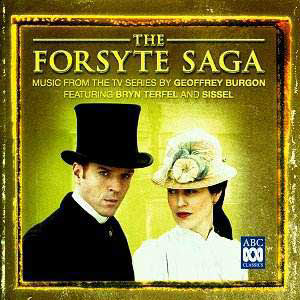Burgon has an extensive track record as a composer
of television music in 1979 Testament of Youth was followed
by Tinker, Tailor, Soldier, Spy, of which the Nunc dimittis
took on an independent life of its own. Two years later saw Brideshead
Revisited and, if anything, even greater success and he has continued
to produce scores for television, though considerably less so for film
his last major score before The Forsyte Saga was for Longitude,
an award winner in 2001.
Twenty-five separate tracks none broaches five minutes,
many hover around the minute mark and a couple boast small contributions
from Bryn Terfel and Scandinavian pop singer Sissel. Burgon is unfailingly
evocative as he summons up ghostly reminiscences and hints. He is also
capable of introducing sonorities and stylistic techniques to convey
mood and interior meaning. The waltz stalks the opening track and introducing
the character Dartie is by means of a perky and well rounded, burnished
cornet. Burgon introduces the merest hints of minimalism in the track
called Irene meets the family whereas in Irene in love the
romantic piano interludes - here and elsewhere played by Ian Brown
allude to Schumann. Burgon turns on the rusticity in Robin Hood and
in The death of Bosinney he conveys the scene by repeated piano
"heart beats" suddenly ending. Love-lorn characters are accompanied
by a heavy treading bass section lightened by reminiscent lulling woodwind.
Burgon can mine his rather French influences in, for example, the wistful
Where is Irene or else can, once more, sail close to the Minimalist
wind, as in the oscillating and repetitive Junes Song. Much
of the writing is couched in the romantic vernacular and embraces subtle
evocation of a Parisian salon, or musical pastiche or lightly spectral
brooding.
The soloists make their mark Ian Brown is a sensitive
exponent, Terfel and Sissel do their very limited bit about three
minutes apiece and Burgon conducts the session band, led by Janice
Graham, with romantic aplomb.
Jonathan Woolf


